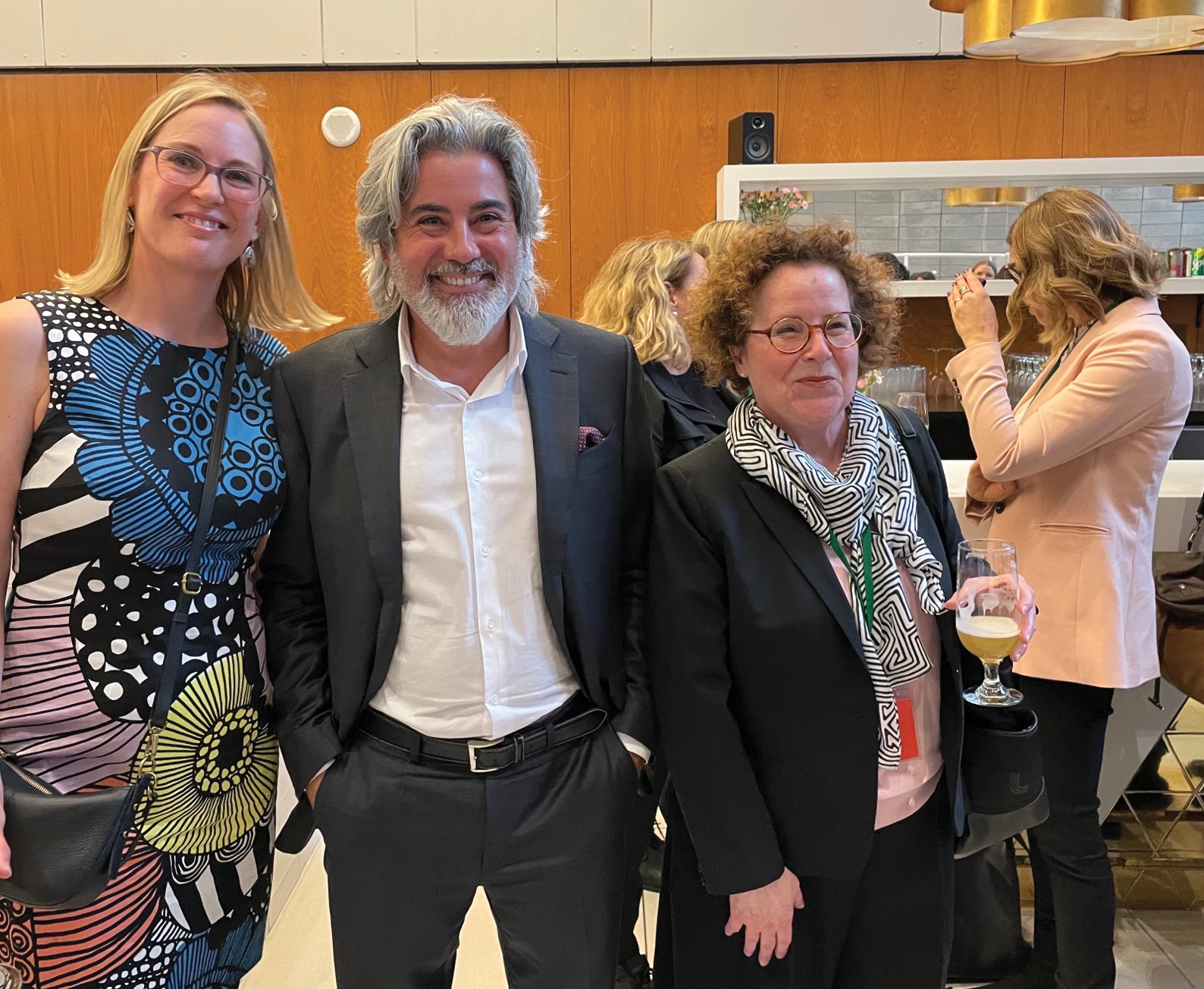In the Spotlight
Canadian Canoe Museum granted viceregal patronage by Governor General Mary Simon
Amid increasing cost of living, museum funding met with criticism
Funding boost for Yellowknife Historical Society
Historical First Nations trading post, Indigenous gravesite designated provincial heritage property
Museums and Art Galleries can be advocates for Canadian Copyright Act Reform
Canadian Canoe Museum granted viceregal patronage by Governor General Mary Simon

The façade of the Canadian Canoe Museum in Peterborough, Ont. Photo — Canadian Canoe Museum.
The Canadian Canoe Museum in Peterborough, ON, was granted viceregal patronage by Governor General of Canada, Mary Simon. To be granted patronage, organizations must be national in scope, be governed and managed responsibly and sustainably, and have objectives aligned with the role and responsibilities of the governor general. Simon, Canada’s first Indigenous Governor General, has communicated a focus on reconciliation since being sworn in in July of 2021, a focus shared by the museum. “We are deeply honoured to have Her Excellency the Right Honourable Mary Simon, Governor General of Canada, as our viceregal patron. To be recognized nationally for making an exceptional contribution to Canada through the scale and scope of the museum’s collection and our work, specifically our collaborative relationships with Indigenous communities, is exciting and inspiring, especially at this moment as we embark on our journey to our new home at the water’s edge,” Executive Director Carolyn Hyslop told Muse. The museum holds the world’s largest collection of canoes and kayaks, and is currently constructing a new waterfront home slated to open in the summer of 2023, which will operate trilingually in English, French and Michi Saagiig Anishnaabemowin.
Amid increasing cost of living, museum funding met with criticism

As Canadians have lately been feeling the brunt of increased cost of living, federal and provincial funding allocations have been met with increased public scrutiny. Controversial among those allocations have been those geared toward some museums’ reconstruction efforts.
In July 2022, Nova Scotia Premier Tim Houston announced that the new Art Gallery of Nova Scotia (AGNS) building project has been put on hold. The project was expected to cost about $137 million, but a recent independent estimate projected a cost increase of at least $25 million. “Now is not the time,” explained Premier Houston.
This is not the first such instance. In May, the Royal BC Museum (RBCM) had been awarded $789 million provincial grant to construct new buildings. The price included $230 million to account for inflation costs between now and 2030, the year in which the project was planned to have been completed. Two months later, BC Premier John Horgan scrapped the plan. “I made the wrong call when British Columbians were thinking about other concerns,” he stated.
Both projects were met with sharp condemnation, citing the same reason: rising cost of living. Tseshaht First Nation Chief Councillor Ken Watts states that RBCM funding was a “misstep” that involved “little to no consultation or discussion” with First Nations. A poll conducted by the Angus Reid Institute found that 69 per cent of British Columbians opposed the plan, and Chief Watts cited that Tseshaht Nation echoes this sentiment. Nova Scotia NDP Leader Claudia Chender stated that “we understand that we are in a cost-of-living crisis,” and that AGNS funding “may be difficult for people to stomach.”
Funding boost for Yellowknife Historical Society

In August, Minister of Northern Affairs, PrairiesCan and CanNor Daniel Vandal announced an additional funding investment of $1.2 million for the Yellowknife Historical Society. The funding is intended to support the continued development of the society’s Community Museum and Interpretive Centre, and is being delivered by Canadian Heritage and CanNor as part of the Inclusive Diversification and Economic Advancement in the North (IDEANorth) program. Planning, development and construction for the new community-driven museum has been underway for over a decade, with significant refurbishment of the roof, foundation and exterior of the building. Since 2019 the focus has been on completing the interior, and this new investment will support accessibility improvements, development and installation of displays and fixtures, along with mechanical and electrical upgrades. The society anticipates a 2023 opening date for the new facility.
Historical First Nations trading post, Indigenous gravesite designated provincial heritage property
The Government of Saskatchewan has designated Lower Hudson House, a historical fur trading post, as a Saskatchewan Heritage Site. While the post, established by the Hudson Bay Company in 1779, operated for less than a decade, at one point roughly half of the western fur trade passed through it. In journals kept by the company, Assiniboine, Cree and Dakota were identified as the primary traders. The post was the site of a smallpox epidemic in 1781–1782, with 24 victims buried in the area, and it was closed in 1787. Four years later, it was burned down by rival traders. The nomination for its heritage designation was made by Philip Parr and Peter Burns of the Prince Albert-based Steering Committee for the Memorialization of Lower Hudson House. “We believe the designation of Lower Hudson House as a provincial heritage property will open a path for everyone to discover the history and tragedy of how the smallpox epidemic of 1781–82 affected the Indigenous populations in the area 240 years before the present day and altered the course of our history as a province,” Parr and Burns said in a government release. “Many interesting stories are waiting to be told about this fascinating period in our past.”
Museums and Art Galleries can be advocates for Canadian Copyright Act Reform

(From left to right) CARFAC Executive Director April Britski, the Honourable Pablo Rodriguez, Minister of Canadian Heritage, and Regroupement des Artistes en Arts Visuels (RAAV) Executive Director Maryse Beaulieu during a 2018 presentation on Artist’s Rights to Resale (ARR) at Parliament.
The “starving artist” stereotype is not short of its legal predeterminants, at least in the Canadian context. Once artists make an initial sale of their art in Canada, they have no right to claim a portion of profits made by resellers from their own artwork being resold. Advocates for legal reform of this situation call for Artist’s Resale Right (ARR), a royalty that enables artists to share in the profits that are made on their work in the secondary market.
Notable among such advocates is the Canadian Artists Representation (CARFAC). CARFAC Executive Director April Britski notes that more than 90 countries in the world have ARR. “Art often grows in value over time, and Canadian artists currently have no legal right to receive income from this growth. Adding the ARR to the Copyright Act can help correct this imbalance, so that being an artist is a more sustainable career choice.”
Indigenous communities are disproportionately impacted by the lack of ARR, due to many relying on art sales as sources of income. “Indigenous artists are often exploited in the secondary market. It is common for art to be directly purchased from an artist at a low price, only to be resold at a much higher value,” cites Britski.
A milestone in advocacy efforts was hit most recently in December 2021, when the Liberal government issued a mandate letter that included a directive to amend Canada’s Copyright Act to allow for ARR. “CARFAC recommends that artists receive 5 per cent when their work is resold for at least $1,000,” says Britski.
Nonetheless, advocacy for ARR persists. In the context of museums and art galleries’ efforts to implement UNDRIP and to become communal support hubs, Britski recommends that they should “write letters of support to members of Parliament,” as “many artists who have exhibitions in Canadian museums [and art galleries] are popular in the secondary market, and would benefit from the ARR. Without these artists, there would be no art.”
